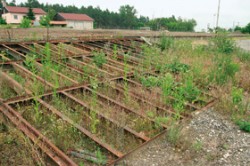Znalosti o invadovanosti různých společenstev nebo biotopů byly až donedávna spíše kusé a nepodložené reprezentativními daty, která by srovnávala větší počet společenstev. Teprve koncem 90. let 20. století se objevil vhodný zdroj dat pro hodnocení invadovanosti rostlinných společenstev, a to velké databáze fytocenologických snímků vytvářené v některých zemích, zejména v Evropě. Článek přináší mj. odpověď na otázky, která společenstva jsou nejvíce a nejméně invadována a jaké jsou rozdíly v invadovanosti společenstev archeofyty a neofyty.
Chytrý M. a kol. (2008): Habitat invasions by alien plants: a quantitative comparison among Mediterranean, subcontinental and oceanic regions of Europe. J. Appl. Ecol. 45: 448–458.
Kowarik I. (1995): On the role of alien species in urban flora and vegetation. – In: Pyšek P., Prach K., Rejmánek M. & Wade P. M. [eds], Plant invasions: general aspects and special problems, p. 85–103, SPB Academic Publishing, Amsterdam.
Stohlgren T. J., Jarnevich C., Chong G. W. & Evangelista P. H. (2006b): Scale and plant invasions: A theory of biotic acceptance. Preslia 78: 405–426.
Knowledge on the level of invasion in different communities and biotopes has been very scarce until recently and not supported by representative data comparing a higher number of communities. As late as at the end of the 1990s, an important source of data allowing for the evaluation of plant communities’ level of invasion was discovered, namely great databases of phytosociological relevés collected in some countries, especially in Europe. The article answers to such questions as which communities are invaded at the highest and which at the lowest level and which differences exist in invasion level by archeophytes and neophytes.
 Jedním z nejvíce invadovaných biotopů jsou ruderální místa ve městech, vesnicích, podél silnic a železnic. Na nich se vyskytuje mnoho archeofytů i neofytů (zde např. severoamerický turan roční – Erigeron annuus), které svými počty druhů i celkovou biomasou často výrazně převažují nad původními druhy. Foto M. Chytrý / © M. Chytrý
Jedním z nejvíce invadovaných biotopů jsou ruderální místa ve městech, vesnicích, podél silnic a železnic. Na nich se vyskytuje mnoho archeofytů i neofytů (zde např. severoamerický turan roční – Erigeron annuus), které svými počty druhů i celkovou biomasou často výrazně převažují nad původními druhy. Foto M. Chytrý / © M. Chytrý


